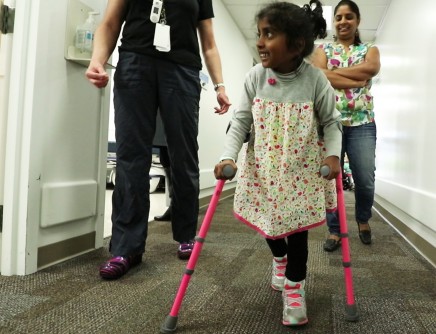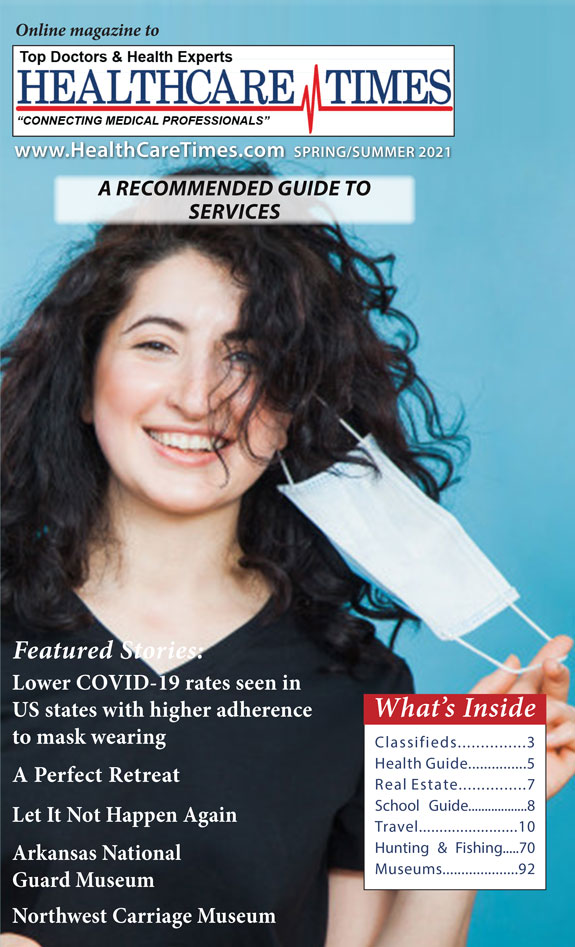News
Newswise —
Conservation projects that protect forests and encourage a diversity of plants and animals can provide many benefits to humans.
But improved human health is not among those benefits ― at least when health is measured through the lens of infectious disease. That's the main finding of a paper published April 24 in Philosophical Transactions of the Royal Society B, which analyzed the relationship between infectious diseases and their environmental, demographic and economic drivers in dozens of countries over 20 years.
The new study found that increased biodiversity ― measured as the number of species and amount of forested land ― was not associated with reduced levels of infectious disease. In some cases, disease burdens actually increased as areas became more forested over time.
"There are a lot of great reasons for conservation, but control of infectious disease isn't one of them," said lead author and parasite ecologist Chelsea Wood, an assistant professor in the School of Aquatic and Fishery Sciences at the University of Washington. "We're not going to improve public health by pushing a single button. This study clearly shows that ― at the country level ― conservation is not a disease-control tool."
Surprisingly, Wood said, the study also found that increasing urbanization reduced disease, probably because cities bring people closer to medical care and give them greater access to vaccinations, clean water and sanitation.
Even though cities crowd people together, the net benefit of their services results in reductions of infectious disease.
"It seems pretty clear that urbanization is good for people's health ― at least when it comes to infectious disease. And that's good news, because the world is rapidly urbanizing," Wood said.
The researchers relied on the UW-based Institute for Health Metrics and Evaluation's Global Burden of Disease database, a massive, worldwide effort to document premature death and disability from hundreds of diseases and injuries from 1990 to the present.
The study's authors compared data on 24 infectious diseases ― ranging from malaria, dengue and rabies to typhoid, tuberculosis and leprosy ― with separate, published data on population density, wealth, bird and mammal species richness, forest cover, precipitation and other environmental measures to analyze the effects these factors had, if any, on disease burden per country. This study is the first to look at the association between biodiversity and disease over time.
Most conservation decisions are made at the country level, so the researchers focused at that scale when analyzing whether conservation could be used as a tool for improving public health. Over the 20-year period, they saw no relationship between biodiversity (number of species present) and the overall burden of infectious disease. But for each individual disease, there was a unique set of drivers that were important in deciding whether burden increased or decreased over time.
For example, as rates of precipitation went up, so did the burden of "geohelminths" ― a group of gut parasites that includes hookworm, whipworm and roundworm. Together, the geohelminths affect 1.5 billion people.
Moist soil is an ideal environment for the development of these worms. Humans can become infected when they contact or accidentally ingest contaminated soil ― for example, on unwashed vegetables. As rates of precipitation increase with climate change, this public health threat should be acknowledged and accounted for, the researchers said.
The authors hope the disease-specific information included in this study reveals pathways toward effective control, and helps country officials to avoid inadvertently exacerbating existing public health problems.
"I hope this study encourages people to explicitly acknowledge the potential disease-related risks and benefits of conservation projects," Wood said. "The absolute last thing we want to do is a conservation project that gets people sick."
This paper is the concluding piece in an entire special edition dedicated to exploring whether conservation promotes or hinders infectious disease control. The edition's co-authors convened about two years ago to explore all sides of this controversial question, and the resulting papers examine specific diseases such as malaria, Lyme disease and schistosomiasis, as well as broader topics of policy and economics.
"The special issue arose from an interest in moving away from the very heated but some somewhat academic debate about the influence of 'biodiversity' on disease prevalence, to the more practical question about the efficacy of conservation action as a public health intervention strategy, particularly as compared to other intervention strategies," said paper co-author Hillary Young of the University of California, Santa Barbara, who is also an editor for the special edition.
Other co-authors are Alex McInturff of the University of California, Berkeley; DoHyung Kim of the University of Maryland; and Kevin Lafferty of the U.S. Geological Survey.
This study was supported by the Michigan Society of Fellows and the Department of Ecology and Evolutionary Biology at the University of Michigan, along with funding from the authors' institutions and agencies.
###
Newswise —
Bhoomi Manjunatha, 5, has been able to rely less on her walker and wheelchair, and more on her own two feet, because of a surgery performed at Nationwide Children’s Hospital. Her hard work and determination in physical and occupational therapy post-surgery has also helped Bhoomi continue to make strides.
Bhoomi was born with cerebral palsy and spasticity, a muscle control disorder that involves tight or stiff muscles and the inability to control those muscles. Spasticity affects more than 12 million people worldwide, including 80 percent of people with cerebral palsy.
The spinal surgery Bhoomi had in January, called selective dorsal rhizotomy, was performed by Jeffrey R. Leonard, MD, chief of Neurosurgery at Nationwide Children’s. In the operating room, the surgery team anatomically divided out dorsal nerve roots which control the sensory portion of the spinal cord. They stimulate them electronically to determine which rootlets were abnormal and section about 60 percent of the feedback to prevent the tightening and stiffness that Bhoomi experienced.
“The surgery went well, but my part is easy. It is Bhoomi who has months of hard work and therapy ahead of her to strengthen her muscles to take advantage of her newfound mobility,” said Dr. Leonard, who is also a faculty member at The Ohio State University College of Medicine. “Without a multidisciplinary team of inpatient rehabilitation, outpatient physical therapy and occupational therapy working together, the benefits of rhizotomy would not materialize.”
Bhoomi is now four months post-surgery and the clinical team continues to work with her and collect data. So far, her walking has progressed, she has less pain and Dr. Leonard predicts her posture will improve and that she will require less orthopedic procedures in the future.
“Bhoomi is bright and energetic, you can see that from her smile. She is motivated and did everything that the therapist asked of her, working really hard in rehabilitation,” said Dr. Leonard. “I think she is going to be dramatically effected in a very positive manner after having undergone the rhizotomy.”
Dr. Leonard says there is data for different treatment options for spasticity: orthopedic procedure, therapy alone, pump placement and rhizotomy. However, there are very few studies that have compared them, so he discusses with the family what is available, what has been studied and where the limitations in the data exist to determine what the best treatment options are for each individual patient. Dr. Leonard’s team is currently collecting more information to help fill the gap in data.
At Nationwide Children’s, every child diagnosed with a condition requiring neurosurgical expertise is handled with an individualized treatment plan. Children with spasticity must be screened and tested to determine if they are a candidate for rhizotomy. Request an appointment here.
Newswise —
Medical complications of brown recluse spider bites are uncommon but they can be severe, particularly in children, researchers at Vanderbilt University Medical Center (VUMC) reported today. The hallmark sign of a brown recluse spider bite is a painful, blistering skin lesion. In rare cases the bite also can cause a severe illness called systemic loxoscelism, characterized by a blood clotting disorder and hemolysis, destruction of red blood cells. Patients presenting with these symptoms often don’t know they were bitten. But loxoscelism should be suspected, particularly if patients live in parts of the Southeast and Midwest where the spiders thrive and especially if they are children, the researchers concluded. “Children are much more likely to develop this systemic syndrome,” said Vanderbilt hematologist Jeremy Warner, M.D., M.S., senior author of the report published in PLOS ONE, a journal of the Public Library of Science. In severe cases, treatment may require hospitalization, blood transfusions and other supportive measures. African-Americans also may be at higher risk, said Warner, assistant professor of Medicine and Biomedical Informatics in the Vanderbilt University School of Medicine. “We were inspired to carry out this analysis after treating a patient with a particularly striking episode of hemolysis several days after a brown recluse spider bite,” he said. “He lost literally half of his blood supply over the course of 24 hours but was ultimately OK.” Warner, who is from New England, had never seen a case of systemic loxoscelism before. The vulnerability of children to the venom of the brown recluse spider was picked up during a review of more than 2.4 million patient records stored electronically at VUMC between 1995 and 2015 and de-linked from personal identifying information. Called the Synthetic Derivative, the vast database allows researchers to search for phenotypes – clinical descriptions, lab measures, demographic and environmental characteristics – that are common to patients with the same diagnosis. Led by first author Jamie Robinson, M.D., a General Surgery resident and post-graduate fellow in Biomedical Informatics, the researchers used this approach to identify 57 patients – the largest cohort of individuals with moderate to severe loxoscelism ever reported. Only a third of the patients knew they’d been bitten. It may be possible to use phenotypes to pick out patients who don’t know they’ve been bitten and have not been formally diagnosed. In this way, Warner said, the study advances the goal of personalized medicine, to diagnose conditions earlier and provide the most effective treatment based on patients’ genetic and phenotypic characteristics. Contributing to the study was Joshua Denny, M.D., M.S., professor of Biomedical Informatics and director of the Data and Research Support Center of the National Institutes of Health All of Us Research Program, formerly known as the Precision Medicine Initiative Cohort Program. Other co-authors were Vanessa Kennedy, M.D., Youssef Doss and Lisa Bastarache.
Newswise —
It has been shown that both heavy and occasional drinking among the general population are linked to eating less fruits and vegetables, and eating more processed and fried meat. This is particularly worrisome for pregnant women, as both drinking and inadequate nutrition can have adverse consequences for the fetus. This study investigated links between maternal diet and drinking during pregnancy.
Researchers analyzed data from the Avon Longitudinal Study of Parents and Children (ALSPAC), a study of pregnant women from west England and the children born to them. The women (n=9,839) provided information about drinking at 18 weeks gestation and diet at 32 weeks gestation. The researchers examined associations between drinking and dietary patterns in this sample.
There were two key findings: one, eating more processed foods was associated with heavier drinking; and two, healthier dietary choices that included fruit, vegetables, whole grains, and fish were associated with light to moderate drinking. Study authors suggest that the joint consequences of these behaviors have implications for both maternal and fetal health.
SEE ORIGINAL STUDY
Newswise — Princeton, NJ—
Value in Health, the official journal of the International Society for Pharmacoeconomics and Outcomes Research (ISPOR), announced today the publication of new research indicating that testing for variants in 7 cancer-associated genes (versus the usual process of testing in just 2 genes) followed by risk-reduction management could cost-effectively improve life expectancy for women at risk of hereditary breast cancer. The report of these findings, A Multigene Test Could Cost-Effectively Help Extend Life Expectancy for Women at Risk of Hereditary Breast Cancer, was published in the April 2017 issue.
Using hypothetical cohorts of women at risk of hereditary breast cancer, the authors used a decision-analytic model to compare the relative cost and effectiveness of two test strategies for detecting pathogenic genetic variants: 1) the usual BRCA1/2 test strategy, and 2) a next-generation 7-gene strategy that tests for variants not only in BRCA1 and BRCA2, but also in TP53, PTEN, CDH1, STK11, and PALB2. The authors then used these test results to select appropriate breast cancer risk reduction treatments / therapies.
In the base-case scenario for 50- and 40-year-old women undergoing genetic testing, the incremental cost-effectiveness ratio (ICER) for the 7-gene test strategy compared with the BRCA1/2 test strategy was $42,067 and $23,734 per life-year gained, or $69,920 and $48,328 per quality-adjusted life-year gained, respectively. At these ICER levels, the 7-gene test strategy would be considered cost effective according to the World Health Organization guidelines.
“Pathogenic variants in the BRCA1 and BRCA2 genes explain only about 15% of the breast cancer familial relative risk,” said lead author Yonghong Li, PhD, Quest Diagnostics, USA, “while pathogenic variants in other genes, including TP53, PTEN, CDH1, and PALB2 contribute further to the familial relative risk. The results of this study,” Dr. Li added, “demonstrate the potential value of newer testing options that allow for the simultaneous analysis of expanded panels of additional genes whose pathogenic variants confer moderate to high risk for breast cancer.”
###
Newswise — Many people might not have heard of theAedes aegypti mosquito until this past year, when the mosquito, and the disease it can carry – Zika – began to make headlines. But more than 220 years ago, this same breed of mosquito was spreading a different and deadly epidemic right here in Philadelphia and just like Zika, this epidemic is seeing a modern resurgence, with Brazil at its epicenter.
It was August of 1793 and Philadelphia – the nation’s capital and the busiest port in the United States – was experiencing a remarkably hot and dry summer. Water levels in streams and wells were low, creating an excellent breeding ground for mosquitos, which seemed to overtake the city. Along with the mosquitos also came an influx of thousands of refugees from the Caribbean seeking to escape political turmoil. But the refugees also brought something else: yellow fever.
The conditions in Philadelphia created the perfect storm for an outbreak. Symptoms start with head, back, and limb pain and a high fever. Sometimes after a few days, the initial symptoms would subside, giving its victims a false hope of recovery. But within a few days, the disease would return with a vengeance, bringing with it an even higher fever, bleeding, vomiting and eventually turning a person’s skin a ghastly shade of yellow – hence the disease’s name – and ultimately leading to death.
Philadelphia's medical community was mystified. Benjamin Rush, MD, the city’s leading physician advised citizens to flee. A large portion of Philadelphia’s citizens, along with members of Congress, President Washington, and his Cabinet, all abandoned the city. By the time the epidemic finally ended in November of that same year, more than 10 percent of the city’s population, approximately 5,000 people, had perished.
Rush, and his protégé, Philip Syng Physick, MD, worked with the few other doctors who stayed behind to try and root out the cause of the outbreak. At that time, little was understood about infectious diseases, especially those that are transmitted via a vector, like a mosquito. Rush and his colleagues tried many unsuccessful techniques that were common at the time, including bloodletting, “purifying” the city’s air with smoke, and finally quarantining the sick. None of it worked.
It took more than a century for physicians and public health experts to discover the true culprit behind yellow fever: the mosquito. Yellow fever is not transmitted by contact with another sick person, but instead by contact with the mosquitoes itself. The mosquito serves as a vector transmitting disease when it bites a person who is infected with yellow fever and then bites a healthy person.
With this discovery, public officials also worked to improve water and sanitation efforts, create drainage systems in densely populated areas, and educate the general public about how the disease is transmitted. The last reported yellow fever outbreak in North America was in New Orleans in 1905.
“Actually, the initial steps to stop yellow fever are not so very different than the recommendations we made locally last summer to combat Zika,” said Pablo Tebas, MD, a professor of Infectious Diseases in the Perelman School of Medicine. “We told residents here in Philadelphia to avoid standing water and places where there are a lot of mosquitos—the same advice we were giving people 100 years ago.”
But with climate change, deforestation, and other environmental challenges, there is concern that yellow fever could again be on the rise.
Brazil has been battling an unusually high number of yellow fever cases since December 2016, with at least 326 confirmed cases, including 220 deaths, and hundreds of additional cases under investigation – making it Brazil's worst yellow fever outbreak among humans in decades according to the World Health Organization (WHO). And cases are creeping closer to two of the country’s largest cities — Rio de Janeiro and São Paulo — sparking fears that the disease could spread to other regions in the Americas.
“The challenge with diseases like yellow fever and Zika is that the conditions that foster an outbreak are not always avoidable, especially in tropical climates, and therefore a vaccine is needed to prevent infection,” Tebas said.
Fortunately, a vaccine for yellow fever is readily available and effective. First issued widely in 1939, WHO recommends the yellow fever vaccine for anyone living in an area where the disease is endemic. Health officials in Brazil have requested millions of doses of the vaccine from an international emergency stockpile in order to be prepared if the virus continues to spread.
“The yellow fever vaccine is actually highly successful,” Tebas said. “It’s 99 percent effective and usually only needs to be administered once. Researchers, including our team at Penn, are using it as a foundation for developing vaccines for other mosquito-borne illnesses like Zika and Dengue.”
At Penn, two different Zika vaccine candidates are in various stages of development. A phase I clinical trial for a Zika vaccine which began in August 2016 in partnership with the Wistar Institute and Inovio/GeneOne Pharmaceuticals aims to discover the safety and effectiveness of a DNA vaccine for Zika. And an mRNA-based Zika vaccine showed great promise in pre-clinical trials, protecting mice and monkeys against the virus with a single dose.
“We are optimistic that we will make progress in creating an effective vaccine to stop Zika from spreading and by using innovative technology like DNA and mRNA, we can hopefully get these vaccines to market faster than traditional vaccines,” Tebas said.
Currently, WHO is recommending the yellow fever vaccine to anyone who plans to travel to Brazil or the surrounding areas as a precaution.
Newswise — (New York –April 17, 2017) –– A new study from the Icahn School of Medicine at Mount Sinai provides important insights into how the body regulates its production of heat, a process known as thermogenesis that is currently intensely studied as a target of diabetes and obesity treatment in humans.
While researchers had previously hypothesized that macrophages, a class of white blood cells, played a major role in thermogenesis, the new study suggests that the main driver of thermogenesis is the sympathetic nervous system, which is chiefly controlled by the brain. The results were published online today in Nature Medicine.
The Mount Sinai research team led by Christoph Buettner, MD, PhD, senior author of the study and Professor of Medicine (Endocrinology, Diabetes, and Bone Disease) at the Icahn School of Medicine at Mount Sinai, focused on catecholamines, hormones released by the sympathetic nervous system to activate brown fat tissue. Brown adipose tissue is a type of fat tissue that burns energy to produce heat and keep us warm. Catecholamines can also convert white fat tissue, the more familiar kind of fat tissue that stores lipids, into a tissue that resembles brown fat. The researchers tested whether macrophages could provide an alternative source of catecholamines, as had been proposed in recent years.
“Thermogenesis is a metabolic process that receives a lot of interest as a target of drugs that allow you to burn energy and hence reduce obesity and improve diabetes. It turns out that macrophages are not that important, as they are unable to make catecholamines, but clearly the brain through the sympathetic nervous system is,” says Dr. Buettner. “Therefore, it is very important to study the role of the brain and the sympathetic nervous system when it comes to understanding metabolism.”
The ability to generate heat is critical for the survival of warm-blooded animals, including humans, as it prevents death by hypothermia. “This evolutionary pressure shaped the biology of humans and that of other warm-blooded animals, and may in part explain why humans are susceptible to developing diabetes in the environment in which we live,” says Dr. Buettner.
According to Dr. Buettner, while a lot of effort has been invested in targeting the immune system to cure diabetes and insulin resistance, as of yet there are no anti-inflammatory drugs that have been shown to work well in humans with metabolic disease. “Our study suggests that perhaps the key to combating the devastating effects of diabetes and obesity in humans is to restore the control of thermogenesis and metabolism by the brain and the autonomic nervous system,” says Dr. Buettner.
This study was performed collaboratively between Mount Sinai and eight other institutions from around the world, most prominently with the group of Timo D. Müller, PhD, Institute for Diabetes and Obesity at the Helmholtz Center Munich in Germany.
This work was further supported by grant from the German Research Foundation DFG-TS226/1-1, DFG-TS226/3-1,SFB1123, Nutripathos Project ANR-15-CE14-0030, European Research Council ERC AdG HypoFlam no. 695054 (to M.H.T.); DFG He3260/8-1, the EU FP7 Network “DIABAT,” the EU ITN Network “TRAIN” 721531 (to S.H.); NIH R01AA023416, DK082724 and a career-development award from the American Diabetes Association (to C.B.); NIH R01DK099222 (to S.D.); NIH DK17844 (to S.C.W.); the Israeli Science Foundation and European Research Council (AdvERC grant 340345) (to S.J.) and the Swedish Research Council and the Knut and Alice Wallenberg Foundation (to J.N. and B.C.).
About the Mount Sinai Health System
The Mount Sinai Health System is an integrated health system committed to providing distinguished care, conducting transformative research, and advancing biomedical education. Structured around seven hospital campuses and a single medical school, the Health System has an extensive ambulatory network and a range of inpatient and outpatient services—from community-based facilities to tertiary and quaternary care.
The System includes approximately 7,100 primary and specialty care physicians; 12 joint-venture ambulatory surgery centers; more than 140 ambulatory practices throughout the five boroughs of New York City, Westchester, Long Island, and Florida; and 31 affiliated community health centers. Physicians are affiliated with the renowned Icahn School of Medicine at Mount Sinai, which is ranked among the highest in the nation in National Institutes of Health funding per investigator. The Mount Sinai Hospital is in the “Honor Roll” of best hospitals in America, ranked No. 15 nationally in the 2016-2017 “Best Hospitals” issue of U.S. News & World Report. The Mount Sinai Hospital is also ranked as one of the nation’s top 20 hospitals in Geriatrics, Gastroenterology/GI Surgery, Cardiology/Heart Surgery, Diabetes/Endocrinology, Nephrology, Neurology/Neurosurgery, and Ear, Nose & Throat, and is in the top 50 in four other specialties. New York Eye and Ear Infirmary of Mount Sinai is ranked No. 10 nationally for Ophthalmology, while Mount Sinai Beth Israel, Mount Sinai St. Luke's, and Mount Sinai West are ranked regionally. Mount Sinai’s Kravis Children’s Hospital is ranked in seven out of ten pediatric specialties by U.S. News & World Report in "Best Children's Hospitals."
For more information, visit http://www.mountsinai.org/, or find Mount Sinai on Facebook, Twitter and YouTube.
# # #
Newswise — MINNEAPOLIS –
Both obesity and being underweight are associated with an increased risk for migraine, according to a meta-analysis published in the April 12, 2017, online issue of Neurology®, the medical journal of the American Academy of Neurology. The researchers looked at all available studies on body mass index (BMI) and migraine.
“As obesity and being underweight are potentially modifiable risk factors for migraine, awareness of these risk factors is vital for both people with migraine and doctors,” said study author B. Lee Peterlin, DO, of Johns Hopkins University School of Medicine and a member of the American Academy of Neurology. “More research is needed to determine whether efforts to help people lose or gain weight could lower their risk for migraine.”
A total of 12 studies with 288,981 participants were included in the meta-analysis. When the researchers compiled all of the results and adjusted for age and sex, they found that obese people were 27 percent more likely to have migraine than people of normal weight. People who were underweight were 13 percent more likely to have migraine than people of normal weight.
Obesity was defined as a BMI of 30 or higher. Underweight was defined as a BMI of less than 18.5.
Peterlin said the risk between obesity and migraine was moderate and similar in size to the link between migraine and bipolar disorders and ischemic heart disease, a condition of recurring chest pain or discomfort when part of the heart does not receive enough blood.
According to Peterlin, age and sex were important variables in the relationship between body mass index and migraine. “This makes sense, as the risk entailed by obesity and the risk of migraine is different in women and men and in younger and older people,” she said. “Both obesity disease risk and the occurrence of migraine is more common in women and in younger people.”
She continued, “It’s not clear how body composition could affect migraine. Adipose tissue, or fatty tissue, secretes a wide range of molecules that could play a role in developing or triggering migraine. It’s also possible that other factors such as changes in physical activity, medications, or other conditions such as depression play a role in the relationship between migraine and body composition.”
Limitations of the meta-analysis include that for half of the studies people self-reported that they had migraine and for more than half of the studies people self-reported their body mass index.
The study was supported by the National Institutes of Health and the National Institute of Neurological Disorders and Stroke.
To learn more about migraine, visit www.aan.com/patients.
The American Academy of Neurology is the world’s largest association of neurologists and neuroscience professionals, with 32,000 members. The AAN is dedicated to promoting the highest quality patient-centered neurologic care. A neurologist is a doctor with specialized training in diagnosing, treating and managing disorders of the brain and nervous system such as Alzheimer’s disease, stroke, migraine, multiple sclerosis, concussion, Parkinson’s disease and epilepsy.
For more information about the American Academy of Neurology, visit http://www.aan.com or find us on Facebook, Twitter, Google+, LinkedIn and YouTube.
Newswise — WINSTON-SALEM, N.C. –
It doesn’t matter if it’s Bach, the Beatles, Brad Paisley or Bruno Mars. Your favorite music likely triggers a similar type of activity in your brain as other people’s favorites do in theirs.
That’s one of the things Jonathan Burdette, M.D., has found in researching music’s effects on the brain.
“Music is primal. It affects all of us, but in very personal, unique ways,” said Burdette, a neuroradiologist at Wake Forest Baptist Medical Center. “Your interaction with music is different than mine, but it’s still powerful.
“Your brain has a reaction when you like or don’t like something, including music. We’ve been able to take some baby steps into seeing that, and ‘dislike’ looks different than ‘like’ and much different than ‘favorite.’”
To study how music preferences might affect functional brain connectivity – the interactions among separate areas of the brain – Burdette and his fellow investigators used functional magnetic resonance imaging (fMRI), which depicts brain activity by detecting changes in blood flow. Scans were made of 21 people while they listened to music they said they most liked and disliked from among five genres (classical, country, rap, rock and Chinese opera) and to a song or piece of music they had previously named as their personal favorite.
Those fMRI scans showed a consistent pattern: The listeners’ preferences, not the type of music they were listening to, had the greatest impact on brain connectivity – especially on a brain circuit known to be involved in internally focused thought, empathy and self-awareness. This circuit, called the default mode network, was poorly connected when the participants were listening to the music they disliked, better connected when listening to the music they liked and the most connected when listening to their favorites.
The researchers also found that listening to favorite songs altered the connectivity between auditory brain areas and a region responsible for memory and social emotion consolidation.
“Given that music preferences are uniquely individualized phenomena and that music can vary in acoustic complexity and the presence or absence of lyrics, the consistency of our results was unexpected,” the researchers wrote in the journal Nature Scientific Reports (Aug. 28, 2014). “These findings may explain why comparable emotional and mental states can be experienced by people listening to music that differs as widely as Beethoven and Eminem.”
Not surprising to Burdette was the extent of the connectivity seen in the participants’ brains when they were listening to their favorite tunes.
“There are probably some features in music that make you feel a certain way, but it’s your experience with it that is even more important,” said Burdette, who also is professor of radiology and vice chairman of research at Wake Forest School of Medicine. “Your associations with certain music involve many different parts of the brain, and they’re very strong.
“In some cases, you might not even like the particular song, but you like the memories or feelings that you associate with it.”
In other research projects, Burdette and colleagues at the School of Medicine and the University of North Carolina-Greensboro have found that trained music conductors are likely to be better at combining and using auditory and visual clues than people without musical training; that activity in brain areas associated with vision decreases during tasks that involve listening; and that different levels of complexity in music can have different effects on functional brain connectivity.
“I find this type of work fascinating, because I think music is so important,” Burdette said. “If science can help get more people to recognize what music does to and for us, great.”
Music is just a small part of Burdette’s research activities – his most recently published study, for example, showed that brain volume could be an accurate predictor of success in weight-loss attempts by the elderly – but it has long been a big of part his life.
Burdette grew up playing viola, piano and guitar. He has been singing since childhood and continues to do so, including in the chorus in productions staged by the Piedmont Opera, of which he has been a board member for more than 10 years. He’s also done some conducting. His wife, Shona Simpson, plays piano. Their three teenage daughters – Fiona, Ellie and Jessie – perform professionally as the Dan River Girls. His brother, Kevin, is a singer who has appeared as a soloist with the Metropolitan Opera, Los Angeles Philharmonic and other top-tier opera companies and symphony orchestras.
“Music is my avocation,” the physician in the family said. “Radiology is my vocation.”
Burdette additionally has deep interest, if not direct involvement, in music’s clinical applications.
“Music isn’t going to cure anything, but it definitely can play a therapeutic role,” he said.
In countries such as Germany, Burdette noted, music therapy is commonly an integral part of the rehabilitation process for people who have had strokes, brain surgery or traumatic brain injuries.
“If you’re trying to restore neuroplasticity in the brain, to re-establish some of the connections that were there before the injury, music can be a big help, and I’d like to see it used more widely in this country,” he said.
Burdette also is a proponent of programs that help people with Alzheimer’s, dementia and other cognitive and physical problems re-connect with the world through music. One such program is Music & Memory, which employs iPods with customized playlists featuring songs popular when the participating individual was under 30 years old.
“You can actually see the power of music,” Burdette said. “People who were just sitting there, not engaged in anything, light up when they start hearing music from when they were 25.
“It’s fantastic. What else can do that? I can’t think of anything other than music.”
People who suffer heart attacks or cardiac arrests in the vicinity of an ongoing major marathon are more likely to die within a month due to delays in transportation to nearby hospitals, according to newly published research from Harvard Medical School. The delays, the researchers say, likely stem from widespread street closures during major races that can hamper transportation in an emergency.
Writing in the April 13 issue of the New England Journal of Medicine, the study authors call for citywide strategies that ensure unhampered access for medical crews in a certain radius of major races and other large public gatherings, such as sporting events or parades.
Previous studies have examined death rates among marathon runners to assess the cardiac risks of endurance training, but this is believed to be the first study to analyze the impact of such races on those living nearby due to causes that have nothing to do with the physical exertion of running a marathon.
“We have traditionally focused medical preparedness and emergency care availability to address the needs of race runners, but our study suggests that effects of a marathon may spread well beyond the course of the event and affect those who live or happen to be nearby,” said the study’s senior author, Anupam Jena, the Ruth L. Newhouse Associate Professor of Health Care Policy at Harvard Medical School.
The investigators examined 10 years’ worth of patient records analyzing death rates among older Americans, 65 years of age and over, within 30 days of having a heart attack or a cardiac arrest near a major marathon across 11 U.S. cities. Researchers compared death rates among patients hospitalized on the day of the race with those hospitalized five weeks prior or five weeks after the race. Additionally, the researchers divided patients by zip code, comparing death rates among those living near the marathon and those living in zip codes well outside of the event’s radius and unaffected by street closures.
Patients admitted to a hospital on race day were nearly 15 percent more likely to die within a month of suffering a heart attack or cardiac arrest compared with those admitted on a non-marathon day or in a hospital outside of the marathon’s zip code(s).
That spike translated into a nearly 4 percent difference in the number of deaths. In other words, the researchers say, for every 100 patients with heart attack or cardiac arrest, three to four more people died within a month in the group admitted to a hospital on race day if they happened to go to a hospital near the race course.
The research also showed that ambulance transport was delayed by an average of 4.4 minutes on marathon days, 32 percent longer travel time compared with transports not delayed by marathons. Additionally, nearly a quarter of patients in the study got themselves to the hospital without an ambulance. While there is no record of the amount of time private transportation took, the authors suspect that many such trips would have been slow on marathon days.
While the findings do not establish cause and effect between street closures and greater mortality, the researchers point out that many studies have shown that even very small delays in getting care could make the difference between life and death.
“When it comes to treating people in the throes of a heart attack, minutes do matter. Heart muscle dies quickly during a heart attack, so current guidelines call for rapid intervention, preferably within an hour or so of diagnosing a heart attack, to salvage cardiac muscle function,” said Jena, who is also a physician at Massachusetts General Hospital.
As runners speed through the streets of the nation’s most popular marathons, traffic around race routes slows to a crawl. Marathon organizers make every effort to ensure safe and smooth passage for runners, but large public gatherings—such as major sporting events, parades or Independence Day fireworks—can cause major traffic snags.
So, the HMS researchers wondered what kind of unintended consequences these sprawling, 26.2-mile events might have on the health of people who live near the race course.
The findings suggest that between three and four preventable deaths likely occur each year among older residents who suffer heart attacks and cardiac arrests during marathons across the eleven cities studied.
“Marathons and other large, popular civic events are an important part of the fabric of life in our big cities, and they bring people a lot of pride and joy,” Jena said. “But the organizers of these events need to take these risks to heart when they are planning their events, and find better ways to make sure that the race’s neighbors are able to receive the lifesaving care that they need quickly.”
The races included in the analysis took place between 2002 and 2012 in Boston, Chicago, Honolulu, Houston, Los Angeles, Minneapolis, New York City, Orlando, Philadelphia, Seattle and Washington, D.C.
To rule out other possible explanations for the spike in mortality, the researchers checked to see whether patients were sent to different hospitals, whether they traveled longer distances, whether out of town spectators or race participants skewed the mix of patients, whether people waited until their conditions were more severe before calling for an ambulance, or whether staffing levels or the type of treatment used on marathon days were different from usual, and they found no evidence to support any of these possibilities.
The researchers say that their findings suggest that citywide strategies for emergency medical preparedness need to do more to account for the risks to nonparticipants whose emergency medical care may be delayed.
“When cities host big marathons, or when people participate in races, they don't think that there might be a chance that a person not taking part in the race could die because of the event,” Jena said. “These findings don’t mean we shouldn't have large public events, but hopefully our research will shine some light on the problem and suggest ways that planners can better provide for the health and safety of the people who live nearby.”
N. Clay Mann, professor in the Department of Pediatrics at the University of Utah School of Medicine and director for research at the Intermountain Injury Control Research Center; Leia N. Wedlund, a student at Harvard University; and Andrew Olenski, a research assistant in the HMS Department of Health Care Policy, were co-authors of this study.
This research was supported with funding from the Office of the Director, National Institutes of Health (NIH Early Independence Award, Grant 1DP5OD017897-01).
Release written by Jake Miller
















